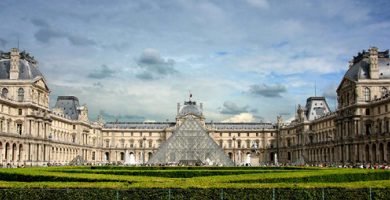What is Modular Art?
Modular art is a type of contemporary art known for the use of a repeating image or unit to create a larger image or three-dimensional piece. This type of concept art has a basis in architecture for its mathematically precise applications of proportion. modular art
The visual or sculptural building blocks used in modular art can be as simple as colored squares or as complex as a series of carved marble columns.
Artists who create this type of generative art often have the goal of making an image or object that is quite different from the individual pieces that make it up. modular art
Units of generative art used in repeating patterns are often referred to as modules.
A module for a two-dimensional modular artwork is generally selected according to certain laws of mathematics, such as congruence and equivalence. modular art
Knowledge of number theory is often important in correctly matching visuals so that they have balanced proportions of color and shape.
Some modular artists begin to formulate these patterns by assigning a specific number to each interlocking shape and then stitching the artwork together according to a chosen numerical order.
The resulting patterns in some pieces can be changed without disturbing this balance, although others are not as structurally or visually flexible.
Some art movements include the use of a modular art construction designed to create optical illusions of movement when viewers look at a still image.
Precisely placing repeating curves in a uniform pattern can create this visual effect, for example.
Artists who have created these types of works often aim to demonstrate that art is fluid and evolving rather than static and unchanging. Many of these pieces are also created according to certain principles of serial art that give meaning to the entire unit rather than its individual building blocks.
The minimalist art movement of the 1960s included some types of modular art as a collective expression of the visual possibilities of endless repetition.
Some of the earlier art pieces from this time period consisted of simple colored panels interlocking in a way that suggested that the same pattern could continue to regenerate ad infinitum.
Similar principles were incorporated into large-scale sculptural works that artists would draw on paper but then assign others to the actual construction process.
These modular art forms often reflected postmodernist attitudes toward mass production and uniformity found in many areas of contemporary life.





